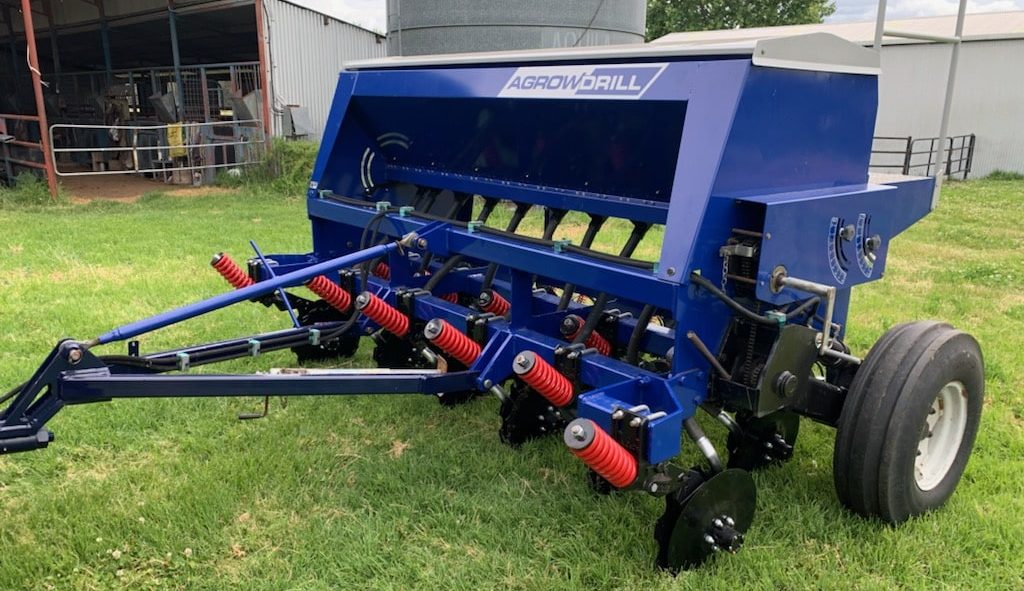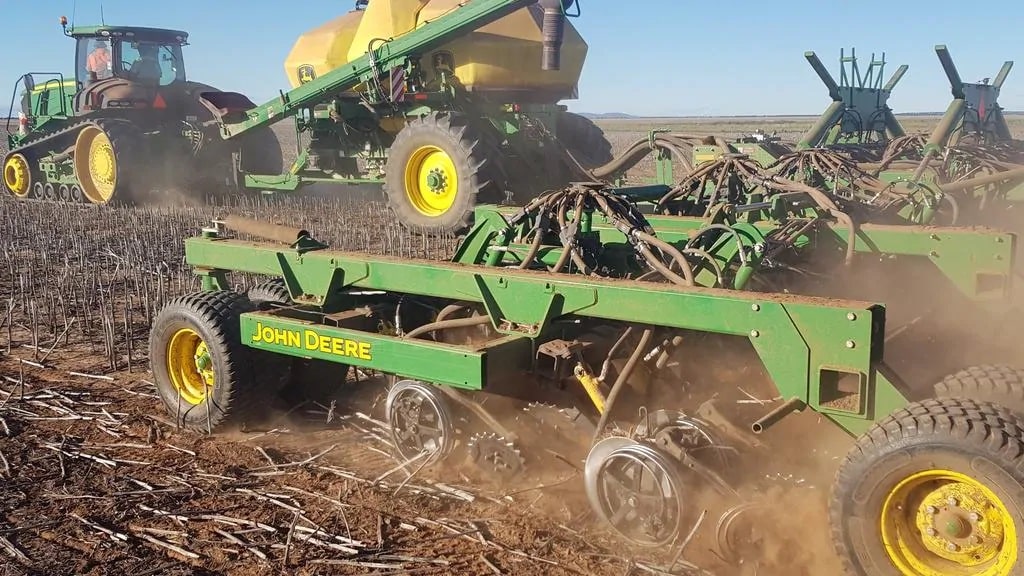No-till farming can give you many benefits. Why are you rejecting it?
By RYANNT 29 Nov 2021
There are many benefits to adopting no-till farming practices. The old-fashioned practice of preparing the soil for planting by using machinery to turn it over, known as tillage, can damage farmland and the environment.
Farmers with a keen mind for conservation are looking for new practices to be more sustainable. Originally this was minimum tillage practices, but this has now moved to the rapid adoption of no-till and zero-till farming. Whilst growing in popularity around the world, the technique is not embraced by all.
Conventional farmers mainly use tillage for weed control. When a farmer cultivates their soil, it can be overturned by a foot deep. This cultivation can lead to 90 per cent losses in crop residue (also known as the decomposing plant from last season) from the topsoil.
This labour-intensive process usually requires heavy machinery with high fuel costs and can require many passes to break down the soil. But it does come with the benefits of disrupting the lifecycles of pre-existing weeds and pests. Overall this practice can lead to soil damage and exposure to wind and water erosion.
The detriments of tillage can be seen in periods of severe windstorms and droughts when combined with eroding topsoil, which can ruin crops and farms. These conditions have caused farmers to rethink their tillage based farming practices.
Improve Your Soils

Agrowdrill No-till seeding rig fitted with Ryan NT retrofit double discs and tynes.
No-till farming is a practice to conserve soil that prepares it for planting without mechanically disturbing it. The crops from the previous year (referred to as crop residue) are left on top of the soil. A no-till planter will then pass over this prepared ground, placing seeds into the slight puncture or slot that it has made in the ground. As this process excludes tilling to control weeds, herbicides and pesticides may be required before and after planting.
Scientific advancements have brought safe and effective strategies and chemicals to do so. For instance, pesticides used are considered and planned for under Integrated Pest Management (IPM) practices.
The land receives countless benefits from embracing a no-till system, which includes:
- Generally, soils are undisturbed, and high levels of crop residues are left behind.
- Soil erosion almost being eliminated.
- Drastically increased water infiltration and therefore retention by the soil due to crop residues. This retention means less runoff water, in turn reducing erosion.
- Crop residues can provide much needed additional water to crops in late summer. No-till farms have recorded twice as much penetration rate than conventionally tilled land.
- No-till soils are seldom agitated, which promotes biodiversity throughout the soil. Organisms like mycorrhizal fungi flourish with no-till farming; they make a relationship that benefits the fungus itself, crop roots, and earthworms. This relationship increases the water retention of the soil.
- Reduced soil disturbance leads to lower soil tilth levels for weeds seeds to germinate, allowing the crop to compete better.
- Crop rotation and keeping crop residues are known to reduce weeds from germinating from season to season.

Zero-till John Deere seeder with Ryan NT Coil Gauge Wheels
Further Benefits For Farmers And The Environment
Farmer's can benefit by adopting no-till as well, specifically through reduced labour. Conventional farming practices can require up to five passes or more over the land with a plow, whilst no-till requires one pass when planting seeds. Some studies have estimated labour reductions by at least 50 per cent for no-till compared to conventional tillage.
Farmer's are reducing their global footprint with no-till practices. For instance, machinery such as tractors produces diminished carbon emissions from reduced operating times (there is also the added benefit of cost savings due to reduced fuel usage). Studies have found that no-till practices have reduced fuel commission by 80%.
Furthermore, when implemented with cover crops (planting crops to improve soil health), studies have shown reduced carbon emissions due to improved carbon dioxide sequestration by the soil. Carbon sequestration is the process of removal and storage of carbon from the atmosphere.
No-till also reduces nitrous oxide, a dangerous greenhouse gas, to be released into the atmosphere as it immobilises it in the soil. A benefit of this is the reduced need to apply nitrogen-rich manure.
Farmers see many benefits from no-till farming, and many have adopted minimum tillage already, but countless still choose to use conventional practices on their land. This is where IPM practices have been developed to provide a sustainable method of farming.
Chemical Usage Considerations
A primary argument against no-till farming, from the organic movement and alike, is that it increases chemical use, such as herbicides and pesticides. Tilling the land uses machinery in place of chemicals, where no-till has to compensate by doing so.
Modern advances for agricultural chemicals have replaced pesticide's which are toxic to humans (e.g. organophosphate and carbamate) with safer alternatives. Further to this, the number of herbicides used is becoming smaller, meaning the impact on the environment has declined.
New genetically modified (GM) crops are aiding in reducing reliance on chemicals with harmful active ingredients. These crops allow for herbicides with active ingredients less toxic than those commonly applied to conventional crops. To the benefit of the environment, these advances mean that chemicals' environmental impact is decreasing significantly. Further to this, GM herbicide-tolerant (HT) crops promote the efficient use of low-dose, low toxicity herbicides.
No-till Farming Has Its Benefits
The key benefits of no-till farming are soil structure, moisture retention and soil ecology. This better soil ecology, the resulting mineralisation and sound agronomic practices allow for better fertiliser use efficiencies.
Farmers are spoilt for choice nowadays when it comes to no-till and zero-till machinery options. Narrow tine coulters or disc machines have proven highly successful when compared to tillage machinery. When comparing tines to discs, the latter has a much lower soil disturbance, bringing even more significant benefits to the soil.
Whilst farmers are enjoying increased cost savings due to reduced fuel and labour, they are getting their crops in the ground much faster with much better-growing conditions. For instance, it allows them to catch much-needed rainfall in time and maximise yield potentials.
It may prove challenging getting all farmers to convert their land to using no-till practices. As the number that does convert increases, the greater it is for themselves, the environment and the land.”

